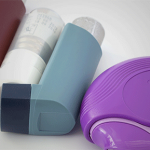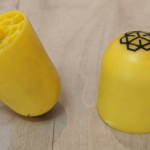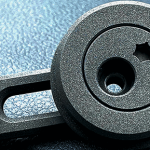- Home
- 3D Printing
- What are the disadvantages of SLA?
What are the disadvantages of SLA?
Any company that offers SLA (stereolithography) 3D printing will happily tell you about the technology’s advantages, but what are the disadvantages of SLA? Prototype Projects has five different 3D printing technologies in-house because we know that no single technology is perfect for every application. We are therefore familiar with the advantages of each 3D printing technology and also their disadvantages. Let’s take a look at the disadvantages of SLA 3D printing.
Not as quick as DLP
SLA and DLP (digital light projection) are similar in that light cures a liquid photopolymer resin. The key difference is that whereas SLA traces a path on the surface of the resin with a point of laser light, DLP cures an entire layer using an almost instantaneous flash of light. DLP is therefore significantly quicker than SLA when making like-for-like parts.
SLA is not as accurate as PµSL
We quote a general tolerance of ±0.5 mm on SLA parts, though the tolerance achieved is often tighter. Our Neo SLA 3D printer has a beam size of 80-750 µm, and our Projets have a beam size of 75-750 µm. Layer thickness is usually 0.1 mm but we can 3D print with 0.05 mm layers if required. For SLA parts, we therefore quote a general tolerance of ±0.5 mm. This accuracy is suitable for many different applications, from presentation models to functional prototypes and, in some cases, end use parts.
In common with SLA and DLP, PµSL (projection micro stereolithography) builds parts by using light to cure photopolymer resins. But that is really where the similarity ends. PµSL achieves a resolution down to 10 µm and we quote a general tolerance of ±25 µm. Furthermore, the parts built with PµSL are much smaller than those typically built with SLA.
As you can see, it is unfair to compare the accuracy of SLA with PµSL, as the two technologies tend to have very different applications.
Limited choice of materials
We have chosen to work with four SLA materials out of the dozens that are currently available. The materials we use are Accura ClearVue (a water-clear material with properties similar to polycarbonate), Accura 25 (similar to polypropylene), Accura Xtreme (similar to ABS) and AMX-300.
By offering four materials, we can offer a fast turnaround because it would be time-consuming to switch between materials on the SLA 3D printers. Furthermore, every material behaves slightly differently, so by becoming very familiar with four, we can be confident of getting parts right first time.
If you need material properties that are unlike those of polycarbonate, polypropylene or ABS, we offer alternative 3D printing technologies such as DLP, PolyJet and SLS. A further option is to make an SLA master pattern and use it for vacuum casting in polyurethane resin, which can be formulated to have a very wide range of material properties, from very rigid to soft elastomeric.
SLA parts can distort
It is true that SLA parts can sometimes distort but this depends on a number of factors such as part geometry, build orientation and support structures.
We never compromise on quality to achieve a fast turnaround or to save material costs, so we always select the optimum build orientation to suit the part’s requirements. We also ensure the support structure is adequate for the part’s geometry and build orientation.
The other times when parts might distort is if they are used in an environment where the temperature is above the maximum recommended, or if they are continually stressed at elevated temperatures so they suffer from creep – as can happen with any plastic.
SLA support structures leave witness marks
The need for support structures means there can be witness marks on the part’s surface where these have been removed. However, we take care when choosing the points where support structures are attached, as well as when removing support structures, to minimise any witness marks. Witness marks are always cleaned from ‘A’ surfaces.
SLA is not suitable for low-volume production
As we have seen already, SLA is a relatively costly 3D printing technology, and parts need an amount of post-processing such as support structure removal, washing, UV curing and finishing. All of this means the technology is not usually suitable for low-volume production. Furthermore, low-volume production is often requested for end-use parts, and the SLA materials we use are not always suitable for end-use applications, depending on the material and operating environment.
If you do need low-volume production parts, we can offer alternative 3D printing technologies that might be more appropriate, or we can vacuum cast parts in polyurethane resin.
SLA parts can degrade in sunlight
SLA 3D printing technology uses a UV (ultraviolet) laser to cure a photosensitive resin, and parts are given a final cure in a UV oven. Unfortunately, long-term exposure to UV from sunlight can degrade the materials. Parts can be protected to some extent by painted finishes but, generally, SLA is not recommended for end-use parts that will be located outdoors.
What are the advantages of SLA?
We like to give a balanced view of the services we offer. As well as the disadvantages of SLA that we have detailed above, there are also many advantages. Read our blog article on the advantages of SLA to find out more.
Talk to us
If you want to discuss your requirements for SLA 3D printed parts, contact us on 01763 249760 or request a quote.





